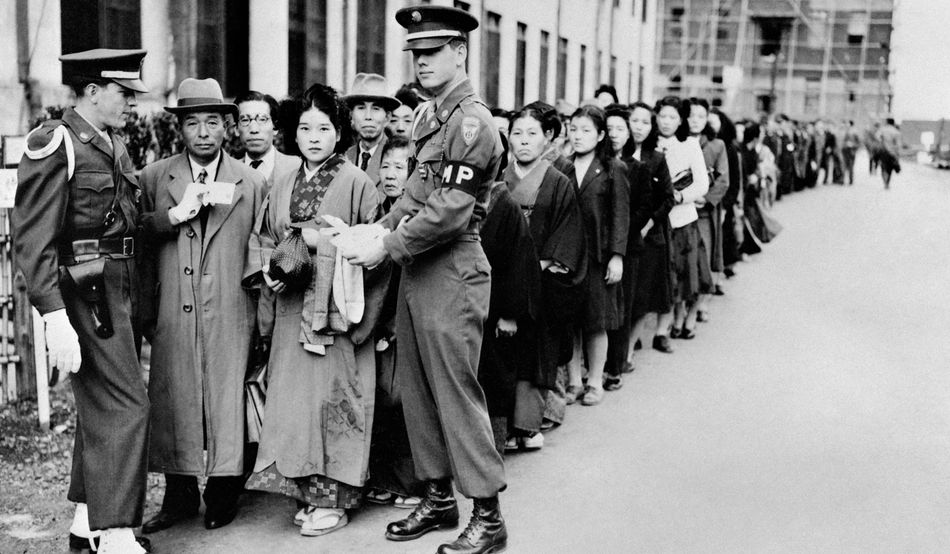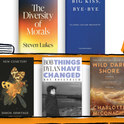One hot summer’s night in Tokyo, in July 1927, the celebrated writer Ryūnosuke Akutagawa went to sleep and never woke up. He had overdosed on the barbiturate Veronal—which he had been taking for insomnia—but devoted friends and readers sought causes for his death both deeper in his life and wider in the world. He had been one of a number of writers, they noted, who thought that Japan’s rapid modernisation along western lines, dating back to the mid-1800s, had begun to bear diseased fruit.
There was plenty about western life that inspired and even moved such writers. Most were well read in European and American literature, and Akutagawa felt the pull of Christianity. In one of his final fragments of prose, widely pondered after his passing, he declared that “Christ’s life will always move us. It is a cruelly broken ladder for us to ascend to earth from heaven, left lying aslant in a relentless downpour from the grey sky.” When Akutagawa’s body was discovered, a Bible lay open by his side.
Japan’s tragedy, as far as people like Akutagawa were concerned, lay in being shaped by aspects of modern western culture that narrowed and perverted the prospects for human flourishing. The result, as depicted in his late works such as Haguruma (Spinning Gears), was the kind of vertiginous desperation that sends a person rifling through bookshop shelves “like a compulsive gambler” and experiencing the world as so devoid of meaning that conversations overheard on trams sound artificial and self-absorbed. Out of this was born the “vague anxiety” about the future that Akutagawa cited in a last note to a friend before he died. His psychiatrist, unwitting supplier of the fatal dose, composed a poem in his memory: “At the end your heart / Must have been like ice.”
Twenty years after Akutagawa’s death, the creeping darkness that fans credited him with detecting had overtaken Japan and engulfed much of the Asia-Pacific region. From April 1946 on, judges from 11 countries sat in a courtroom hearing testimony, weighing evidence and preparing to adjudicate on the roles of a handful of senior Japanese leaders in the war. In legal terms, the International Military Tribunal for the Far East—or “Tokyo trials”—shared with its counterpart in Nuremberg the aim of strengthening the laws of war; part of broader efforts to establish robust international norms and institutions in the aftermath of the Second World War. And yet, as Gary J Bass makes clear in his rich and encompassing new account of the trials, the court inevitably found itself producing an early, potent and polarising draft of history.
The “judgement at Tokyo” of Bass’s title was delivered in court in November 1948. Twenty-five defendants were each found guilty on at least one count. Seven, including Japan’s wartime prime minister, Hideki Tōjō, were sentenced to death. That judgement, however, rested on countless other judgements made before the trials convened—all of them deeply consequential. How far back in time ought we go in seeking the causes of a tragedy? What should be our criteria for deciding who might be to blame? What is the ultimate purpose of such an exercise?
Seven, including Japan’s wartime prime minister, were sentenced to death
Bass dedicates the first hundred pages or so of his book to the formation of these earlier judgements amid the complexities of the war’s final months—including debates about the use of atomic weapons and the terms to be set for Japan’s surrender. It was eventually decided that the trials would consider events in Japan from 1928: the beginning of what were alleged to have been political and military plots that, in time, gave rise to war and crimes of all kinds. For Kanji Ishiwara, an influential ideologue and military figure who escaped prosecution but was called as a witness, this was not nearly far enough. He suggested the 1850s, when American and European gunboat diplomacy forced Japan to become a participant in a global competition for economic and military advantage that was at once vicious and stacked against it. Hideki Tōjō argued, in a statement to reporters, that the Opium Wars of the mid-19th century would have been a fair place to start, thereby recognising the role of British imperialism in shaping the region.
It would be asking rather a lot of a court to pronounce upon great swathes of global history, much less to draw points of legal argument out of the darkness and unease sensed during the interwar years by writers like Akutagawa and his counterparts in the west. And yet it was noted immediately once the trials began that the setting of their parameters exclusively by the victorious Allies undermined claims that justice was about to be done. Not only did the Allies set the mandate, they supplied the judges: one each from the US, Britain, France, China, Australia, New Zealand, Canada, India, the Netherlands, the Philippines and the Soviet Union. They also exempted their own conduct from consideration: the firebombing of Japanese cities; the dropping of atomic bombs.
Nor would Japan’s emperor feature in the trials, despite the desire of some Allied leaders and their populations to see him hang. The US dominated the Allied occupation of Japan (between 1945 and 1952), and decision-makers concluded that the sight of the emperor’s body dangling on a rope might be enough to turn the country’s exhausted quiescence into the sort of raging defiance that would render the place all but ungovernable. They had a point.
Rather less noble, however, was the failure to consider the actions of the Imperial Japanese Army’s infamous Unit 731 in Manchuria. Its research into biological warfare led to the deaths of some 2,000 prisoners, while tens of thousands more were killed in experimental attacks on Chinese cities using plague, cholera and anthrax. Some of the results of this research were deemed to be of sufficient intelligence value to the US that war crimes charges against the Unit’s leadership were not pursued.
One of the great benefits of the extraordinary range of archival and interview work undertaken by Bass and his multilingual team around the world—from Tokyo to Beijing, Canberra to Kolkata, Paris to Washington—is that we discover how widespread and pervasive were people’s misgivings about the trials on the Allied side. When lawyers for the defendants questioned their legal basis, reports Bass, the judges struggled to muster a response. Behind the scenes, judges and prosecutors reported to their home governments on a shambolic start to the proceedings. Some threatened to quit.
A major worry here was that any perceived failure of the Tokyo trials would call into question the legitimacy of Nuremberg. General Douglas MacArthur, supreme commander for the Allied powers during the occupation, meanwhile wondered what they might mean for his efforts to remake Japan in America’s democratic image. Japanese politics was in flux, as socialists and trade unions did battle with conservatives who hoped to preserve as much as they could of their country’s pre-war culture and social arrangements. Verdicts on the past and visions of the future would intertwine, and yet key arguments were being tested in ways that left far too much to the caprice of courtroom interactions.
A major worry here was that any perceived failure of the Tokyo trials would call into question the legitimacy of Nuremberg
The middle part of Bass’s hefty book—detailed but never dull—centres around those interactions, and the evidence and testimony at their heart. The diary of one of the defendants, Kōichi Kido, the emperor’s closest adviser, proved invaluable to prosecutors. But when it came to allegations that the Imperial Japanese Army had carried out massacres in places such as Nanjing, it transpired that some of the most important documentation had been burned. There was still enough evidence to leave no reasonable doubt that such horrors had been perpetrated. But the absence of key material and the weakness of affidavits compared with in-person testimony—most Chinese witnesses could not afford to travel to Japan—diluted the prosecution case.
That case was sometimes poorly made for more personal reasons. Bass describes the prosecution’s cross-examination of Tōjō as “a debacle”. An assistant prosecutor had spent a year studying him, only to be stood down on the big day by the comparatively unprepared chief prosecutor, Joseph Keenan. Tōjō was the one living under threat of the noose. But as a woman working in the British embassy put it, “Tōjō had a good morning hanging Keenan.” He parried Keenan’s attacks, cast his evidence into doubt, and claimed that Japan had been acting in self-defence against encircling enemies.
Problems of evidence, combined with a sense that the trials were compromised by their make-up and mandate, fed into the most famous of three dissenting opinions issued alongside the final judgement: that of the Indian judge, Radhabinod Pal. His role in the trials has long been held to exemplify the way that race and empire frustrated the moral standing, if not the legal clarity, of the proceedings. One can look at photographs of the courtroom and see—depending on one’s point of view—heroes trying villains, victors trying vanquished, or (for the most part) white people trying Asian people.
In a dissent that Bass describes as revolutionary, Pal dismissed the trials as “formalized vengeance” and denied that aggressive war-making had successfully been established as a crime under international law. He professed himself sympathetic to the self-defence argument made by the likes of Tōjō. Japan, so the claim went, had fought to free itself and other Asian nations from white colonial rule. The Tokyo trials were fresh evidence of the hypocrisy of that rule: high-sounding rhetoric about justice masking the domination of one race by another.
Pal’s dissent required glossing over or simply denying carefully catalogued evidence of Japanese aggression and atrocity. In another of the behind-the-scenes moments that are one of the great joys and strengths of his book, Bass reveals the horrified reactions of India’s new leaders—prime minister Jawaharlal Nehru among them—when they became aware, ahead of time, of what Pal’s dissent would contain. Unwilling to undermine Indian justice by ordering Pal to think again, they resorted instead to reassuring the British that they disagreed profoundly with Pal’s analysis. And yet his broader claims about race and colonialism had force. His own country had achieved independence the year before, in 1947, but only after a lengthy and often violent anti-colonial campaign that had turned especially bloody at the very end. The rest of the British Empire was still going strong, while the expansion of America’s was happening right outside the courtroom window: the occupation might be temporary, but US troops would stay.
Bass argues that Pal’s opinion amounted, in parts, to an “alternative history”. One might add that, by this point, ordinary Japanese people had become accustomed to contending with multiple and conflicting accounts of who they were and what their country stood for. Over the past quarter-century, “Japan” had been defined in terms of democratic cosmopolitanism, a chauvinistic militarism and most recently an experiment in American-style democracy, backed by censorship and propaganda. This last was deployed by the US in the service of what the Chinese judge Mei Ju-ao quickly saw was a self-serving scapegoat strategy, limiting war responsibility to a small “group of evil culprits” in hopes of bringing everyone else onside in the building of a new Japan. The attempt was also quickly rumbled by Japanese radio audiences, who had become accustomed to finding the airwaves full of political propaganda. An occupation radio series called Now It Can be Told, broadcast in 1945 and 1946 and claiming to offer the real story of the war to Japanese listeners, received so many complaints that it had to be cancelled.
Meanwhile, Japanese filmmakers were frustrated to find that cinematic depictions of American soldiers, English-language street signage and bombed-out areas of Tokyo were all banned, alongside rather hazily defined “feudal” themes in their work. One of those filmmakers was Akira Kurosawa, who in 1950 helped Ryūnosuke Akutagawa rise to posthumous fame in the west by using two of his short stories as the basis for his period film Rashōmon. The action centres around a tragedy—a samurai has been murdered—whose cause is unclear. People claiming to know something about the incident line up to offer mutually inconsistent and self-serving testimony. Frustrated actors working on Rashōmon kept asking Kurosawa who was supposed to have committed the crime. That, he replied, is not the point. He wanted to explore the power of perception, when vivid yet contradictory accounts are offered of the same set of events.
Here was an early hint of where art might succeed where the law could not. One of the consequences of the trials, notes Bass, was the repeating of arguments made by Tōjō and more especially Pal by a largely unrepentant nationalist right in Japan. They even went as far as erecting a monument in Pal’s honour within the grounds of Tokyo’s Yasukuni Shrine, reviled in China and Korea for its association with Japanese nationalism. More broadly, one could point to the way that a great deal of Japanese reflection on the war down to the present day—particularly that which makes it into the international media—has a courtroom character: black-and-white arguments, point-scoring exchanges, contests over how evidence should be interpreted, alongside a suspicion that lurking behind any talk of “justice” is personal self-interest or a political agenda.
Rather more hopeful, across the 75 years that have elapsed since the Tokyo trials adjourned, has been the work of Japanese novelists, manga artists, filmmakers and others to explore the deeper “why” of the tragedy that unfolded in the mid-20th century. It is often said that Germany has reflected and atoned for its part in those events, where Japan has not. At the political level, there is truth to this: every government apology is quickly followed by noises-off from a small but vocal cadre of revisionists. But why do we think Japanese manga and anime has enjoyed such a warm reception in the west and now, increasingly, in places such as China and Korea? One of the reasons is surely its probing of the sort of darkness sensed by Akutagawa in his last months.
Postwar manga artists set out quite deliberately to do this: celebrating innocence while showing their audiences—including children—how it can be perverted and corrupted; creating worlds, both realistic and gloriously fantastic, in which the drama and consequences of that corruption is shown playing out. For all that our appreciation of Japanese soft power tends to be light-hearted, this deadly serious intent should not be forgotten. If the flawed Tokyo trials were designed to deter future aggression by clarifying the consequences in international law, artistic explorations of the human impulses and social failures that underpin such aggression surely have their place as well. Here, Japan has—for decades—been showing us the way.














